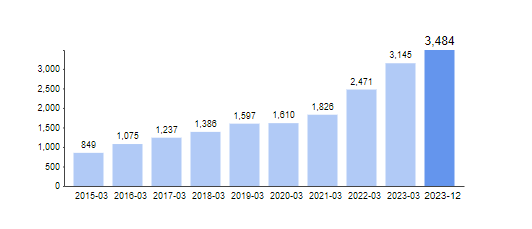20 Handy Ways For Choosing AI Stock Trading Sites
20 Handy Ways For Choosing AI Stock Trading Sites
Blog Article
Top 10 Suggestions To Determine The Integration And Compatibility Of Ai-Based Stock Predicting/Analyzing Trading Platforms
Integration and compatibility are key elements when it comes to the evaluation of AI stock predicting/analyzing trading platforms. Integrating your platform with the existing tools, systems and workflows is a excellent way to improve efficiency. Here are the top ten tips to evaluate compatibility and integration.
1. Check Brokerage Integration
Brokers that are supported: Make sure the platform integrates with your preferred brokerage account or trading account.
Trade execution: Determine if the platform supports direct trade execution through the broker integrated.
Account synchronization: Make sure that the platform is able to sync in real time account balances and positions and transaction history.
2. Check API for Availability
API access: Check whether the platform offers an API that developers can use if they want to automate workflows or create customized tools.
API documentation: See if the API is well-documented with explicit examples and cases of use.
Rate limits: Determine whether the API has reasonable rates and can accommodate your expected amount of usage.
3. Integration of Third-Party Tools
Popular Tools: Ensure that that the platform has integrations with other applications, like Google Sheets and Excel.
Data export/import. Make sure that the platform is able to easily export or import from or to any other tool.
Extensions/Plugins: Make sure your platform can support plugins and extensions to add more features.
4. Test Compatibility with Operating Systems
Desktop compatibility: Ensure that the device is compatible with the operating system of choice (Windows, macOS or Linux).
Mobile compatibility. Verify if you are able to download the app for iOS or Android.
Web-based accessibility: To increase flexibility, check if the interface for your platform can be accessed through the web browser.
5. Assessing the Data Integrity Capabilities
Data sources - Ensure that the platform is connected to different sources of data (e.g. news feeds and market data, as well as sentiment on social media).
Real-time feeds of data Verify that the platform allows for real-time integration of data to offer up-to-date analysis.
Find out if the platform is able to import old data.
6. Assess cloud and On-Premise Compatible
Cloud-based platforms: Ensure the platform is accessible from anywhere connected to the internet.
On-premise solutions. If you are interested in on-premise deployments, check if your platform supports it.
Check the hybrid model. It combines on-premise and cloud capabilities.
7. Look for Cross Platform Syncronization
Device sync. The platform should be able to sync settings and data on every device, including desktop, mobile and tablet.
Verify that changes made to one device immediately reflect on the other devices.
Access offline: Determine whether the platform permits only limited access to data or functions when offline.
8. Examine the compatibility of trading strategies
Algorithmic trading: Ensure the platform is compatible with automated or algorithmic trading strategies.
Custom indicators - See whether the platform allows the use or customized scripts and technical indicators.
Backtesting strategies: Find out if the platform supports backtesting strategies for trading using historical data.
9. Examine Security and Compliance
Data encryption: Make sure the platform is using encryption to protect information in transit as well as in rest.
Verify that your platform is compatible with an authentication method that is secure (e.g. 2-factor authentication).
Compliance with regulatory requirements: Ensure that the platform complies to relevant regulations (e.g. GDPR, FINRA or SEC).
10. Test Scalability and Performance
Scalability: Make sure the platform can handle increasing amounts of users and data as the demands of your business increase.
Performance under load: Check if the platform remains responsive during high-volatility market conditions.
Utilization of resources: Determine whether the platform is using the resources of the system (CPU, memory, bandwidth).
Bonus Tips
User feedback: Use reviews from customers to assess the platform integration capabilities.
Free trial period: You are able to try a demo or a free trial to determine the compatibility of the platform to your current workflows and tools.
Customer Support: Make sure your platform has a robust support to help with integration issues.
Follow these tips to assess the integration and compatibility between AI stock predicting/analyzing platforms and your existing trading systems, and ensure they enhance your trading efficiency. Have a look at the best stock market ai examples for site examples including copyright ai bot, ai copyright signals, ai for copyright trading, best ai for trading, ai trading, best stock analysis website, best ai copyright to buy, best ai for trading, artificial intelligence stocks, best ai copyright trading bot and more.
Top 10 Tips To Evaluate The Risk Management Of Ai Stock Forecasting/Analyzing Trading Platforms
Risk management plays a crucial function in any AI-powered stock trading platform. It helps protect your capital by minimizing possible losses and enables you to maximize profits. Platforms that have robust risk management tools can help you navigate uncertain market conditions and make educated choices. Here are the top 10 ways to evaluate these platforms' risk management capabilities:
1. Review Stop-Loss Features and Take-Profit Features
Levels that can be customized: Make sure the platform allows you to set stop-loss and take-profit levels for individual trades or strategies.
Make sure you are able to use trailing stops. These automatically adjust when the market moves to your advantage.
If the platform has the option of a stop-loss order that guarantees your trade is closed at the specified price in volatile markets, you can be confident of a profitable trade.
2. Use Position Sizing Tools to Assess Positions
Fixed amount. Make sure you have the option to define your positions' sizes as a fixed dollar amount.
Percentage in portfolio Manage your risk by establishing position sizes proportionally as a percentage.
Risk-reward: Check if your platform allows you to define risk-rewards for each trade or strategy.
3. Look for Diversification Aid
Multi-asset Trading: To diversify your portfolio of investments, be sure that the platform you choose supports trading in multiple asset classes.
Sector allocation: Make sure the platform includes tools for monitoring the exposure of different sectors.
Geographic diversification: Check if the platform you trade on has international markets available in order to spread geographical risk.
4. Review margin and leverage controls
Margin requirements: Make sure the platform clearly discloses margin requirements for leveraged trading.
Make sure your platform lets you to limit leverage to manage risk exposure.
Margin call: Make sure that the platform has timely notification for margin calls. This could help keep accounts from being closed.
5. Review the Risk Analytics Reporting
Risk metrics: Be sure the platform has important risk indicators for your portfolio (e.g. Value at Risk (VaR), sharpe ratio and drawdown).
Scenario analysis: Check whether the platform permits users to create various market scenarios in order to evaluate potential risks.
Performance reports - Make sure that the platform includes specific performance reports, including risk adjusted returns.
6. Check for Real-Time Risk Monitoring
Portfolio monitoring: Ensure the platform provides real-time tracking of the risk exposure to your portfolio.
Alerts and notifications - Verify that the platform is sending out alerts at the moment that certain risk-related events occur (e.g. Margin breaches and triggers for stop-loss orders).
Risk dashboards – Check to see if your system has customized risk dashboards. This will provide you with more information about the risks you're facing.
7. Evaluation of Stress Testing and Backtesting
Stress testing: Ensure that the platform lets you stress test your strategies or portfolio in extreme market conditions.
Backtesting. Check whether the platform permits backtesting. This is the use of data from the past to determine the risk and the performance.
Monte Carlo simulators: Verify that the software is using Monte Carlo to simulate a number of possible outcomes to allow you to assess risks.
8. Risk Management Regulations - Assess the Compliance
Compliance with regulatory requirements: Make sure your platform is in compliance with the relevant regulations for risk management in Europe and the U.S. (e.g. MiFID II).
Best execution: Verify whether the platform is following the top execution procedure, which makes sure that trades are carried out at the lowest cost so as to limit any slippage.
Transparency. Check that the platform is clear and makes clear disclosures of potential risks.
9. Look for parameters controlled by the user.
Customized risk rules: Make sure that your platform permits you to define custom risk management guidelines (e.g. the maximum daily loss, or maximum size of the position).
Automated risk control: Determine whether the platform is able to automatically implement rules for risk management based on your defined parameters.
Verify if the platform allows manual overrides to automated risk controls.
Reviews of User Feedback and Case Studies
User reviews: Examine reviews from customers to evaluate the platform's effectiveness at managing risk.
Case studies Look up case studies or testimonials that demonstrate the platform's capability to control risks.
Community forums. Find out if the platform has a lively user-based community where traders share risk management strategies and suggestions.
Bonus Tips
Free trial period: Test the risk management functions of the platform in real-world scenarios.
Customer support: Ensure the platform provides a solid support in relation to risk management concerns or questions.
Educational resources - Check to see whether the platform provides educational resources and tutorials on risk management best practice.
These suggestions will assist you to evaluate the risk management capabilities of AI stock-predicting/analyzing trading platforms. So you can select a platform that protects your capital and minimizes potential losses. To stay out of volatile markets and achieve long-term gains in trading, you need robust risk management software. Read the top best ai trading app url for blog examples including artificial intelligence stocks, best ai stocks to buy, best ai for trading, incite, ai stock trading app, artificial intelligence stocks, investment ai, ai trading bots, ai copyright signals, best stock analysis website and more.